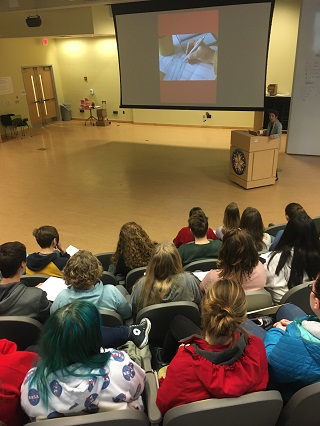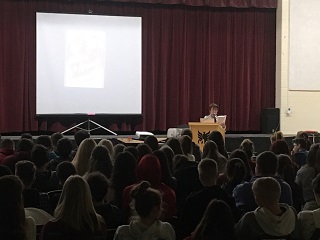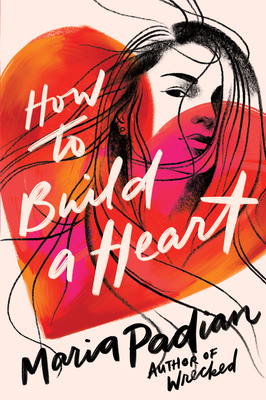On a day of questions, two stood out. Here is the first.

“As you are going along writing your book, how do you stay true to your vision for it?” That was the question a high school student asked one of my favorite YA authors, Maria Padian, yesterday during a school visit. This was not only an excellent question, but one Maria had never been asked before by a student. “I lock in on my characters,” she replied. “Plot follows character and staying true to them keeps the story in line. I always ask myself both what my characters want and what they need. That is a central tension for me and my books are always a journey between those two points.”
Here is the second question.
“How can a woman of my age write a book that will appeal to you?” This was a question Maria posed to herself when addressing the auditorium full of high school students. She noted that technological changes during the intervening years had rendered her experience of being high school age substantially different than theirs: no cell phones, no social media, and so forth. “How can I bridge the gap between my life as a middle aged woman and your life? The answer lies in one simple thing: much of what we feel deeply hasn’t changed. I’m sure you’ve all heard that you should ‘write what you know’ and that is true, but only up to a point. You should write what you know and also what you deeply feel. “

I was immediately interested in hearing Maria talk on these issues because in preparing her introduction I had asked myself what it was that made me so fond of her books. Listening to her speak it was obvious. Her honesty, integrity, conviction, and focused passion created characters who shared those characteristics and therefore connected deeply with readers. Another reason occurred to me. Change comes more easily to young adults than it does for those of middle age, of course. Maria’s ability to inhabit change spoke deeply not only to her intended audience, but also to those of us who seek to maintain the ability to change over time by inhabiting and exploring other worlds of character and experience.

Maria shared with the students that for her new book, How To Build a Heart, she had been interested in exploring her own sense of cultural displacement, that in having an Irish father, and a Latina mother, she had never felt that she was exactly either, and she had sought to build a book around a character who shared that sense of displacement as a means of exploration. There, in the book’s journey from want to need, came the discovery that the holes in our lives are filled with all the many disparate things which touch us deeply. The students were totally engaged and resolved to do the obvious thing. Read the book, I mean to say.
